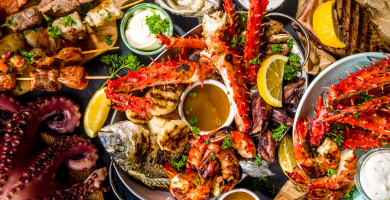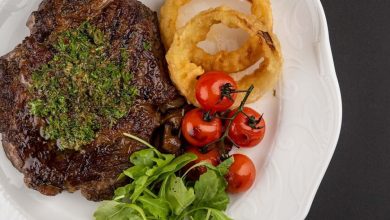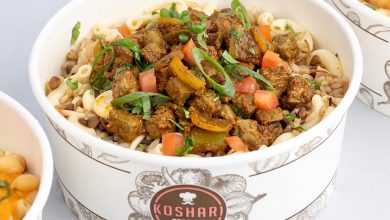Fascinating Qatari food traditions in Ramadan

Ramadan is a holy month of fasting and prayer observed by millions of Muslims worldwide. The month-long observance requires Muslims to fast from dawn until dusk, abstaining from food and water during daylight hours. Here are some customs and cuisine unique to the holy month of Ramadan.
The Three Main Meals of Ramadan
During Ramadan, Muslims have three main meals: suhur, iftar, and ghabga. Suhur is the pre-dawn meal that Muslims consume before beginning their fast for the day. Typical dishes include balaleet, eggs, dates, and yogurt. Iftar is the meal Muslims have to break their fast at sunset. Families often gather to share iftar together and enjoy traditional dishes such as samosas, pakoras, and biryani. Neighbors also send food to one another, and over time, you may develop a preference for different versions of these traditional dishes.
History and Social Heritage of Ghabga
Ghabga is a historical and social tradition in the Gulf that has been revived since the beginning of the twentieth century. The word “ghabga” originates from the arabic word “ghabouk,” which means “late eating at night.” it is considered one of the meals in ramadan that lie between iftar and suhoor. People invite friends and family into their homes for a ghabga as an opportunity to enhance social bonding. Ghabga is often held after taraweeh, which are additional prayers after the evening prayer, Muslims observe during Ramadan. One of the most famous meals eaten during a ghabga is Muhammar or Baranyoush, which consists of fried local fish such as safi and rice cooked with sugar or molasses.
Traditional Ramadan Desserts
During Ramadan, traditional desserts such as luqaimat, sagoo, assidah, and khanfaroosh are enjoyed after iftar. Luqaimat is a sweet dish made of tiny dough balls deep-fried and covered with a sweet, sticky syrup. Saqoo is a pudding made with water, sugar, turmeric, and sagoo pearls. Assidah is similar to a sweet porridge and is made with flour, oil, and sugar. Khanfaroosh is a Qatari ‘donut’ made from rice powder and flour.
Garangao – A Child-Centered Custom
Garangao is a child-centered custom celebrated in the middle of the holy month of Ramadan. Children excitedly go around their neighborhood while singing songs and receiving sweets, dried fruit, and nuts from their family and neighbors.
Al-Naflah
A night of great significance in the Islamic calendar is Al-Naflah, also known as the voluntary night. It falls in the month of Sha’ban, which is the month preceding the holy month of Ramadan. Muslims spend this night in prayer, seeking blessings and preparing themselves for the month of fasting that is to come.
In the past, women from the neighborhood, known as the “fareej,” would gather at the “big house” of the neighborhood, and begin preparing the ingredients needed for Ramadan dishes, such as grains and flour. To make flour, grains were bought fresh from the souq and cleaned before being placed in a special container called the “munahayz.” Here, a long stick was used for grinding the grain. Women would sit around the container in groups of two or three, with one putting the grain into the grinder and the others turning the grinder using a small pole inserted into it. The flour produced from this process was then used to make various dishes, including harees, khubs rgag, luqaimat, and assidah, all of which are traditionally eaten during Ramadan.
In addition to preparing food, Qataris also engage in various customs and traditions during Ramadan. On the night of Al-Naflah, for example, they would pray and then open their homes to neighbors and distribute food, including cooked rice, dates, and sweets. Children would gather in public places, singing and playing a game of catching treats from each other’s plates.






